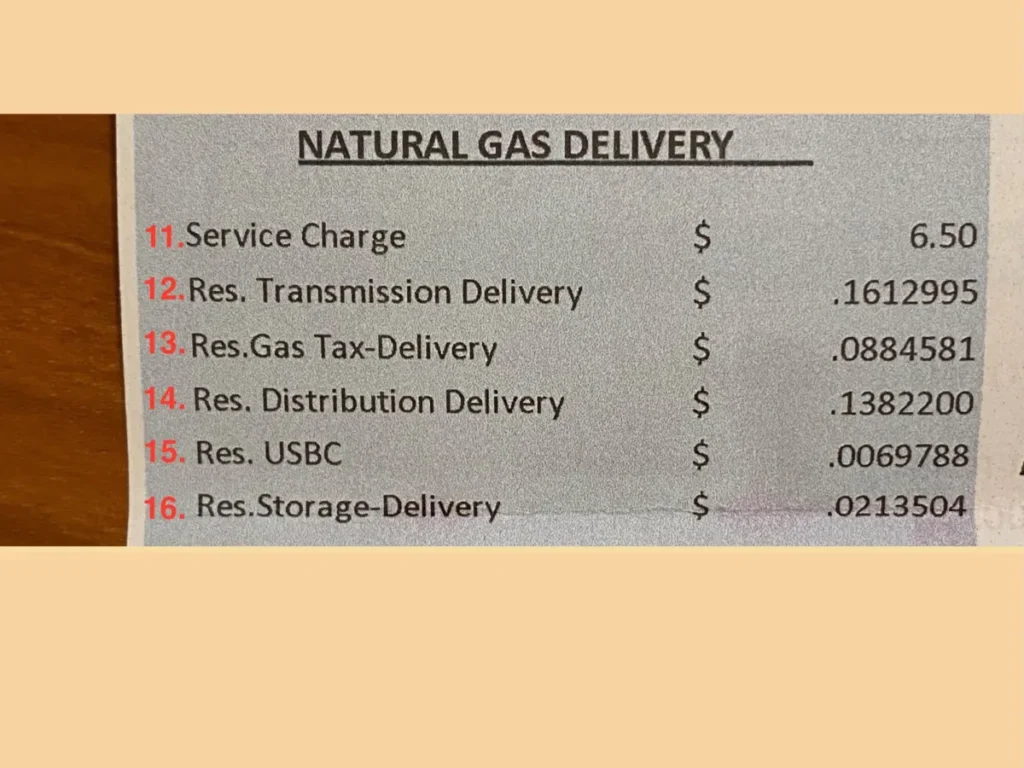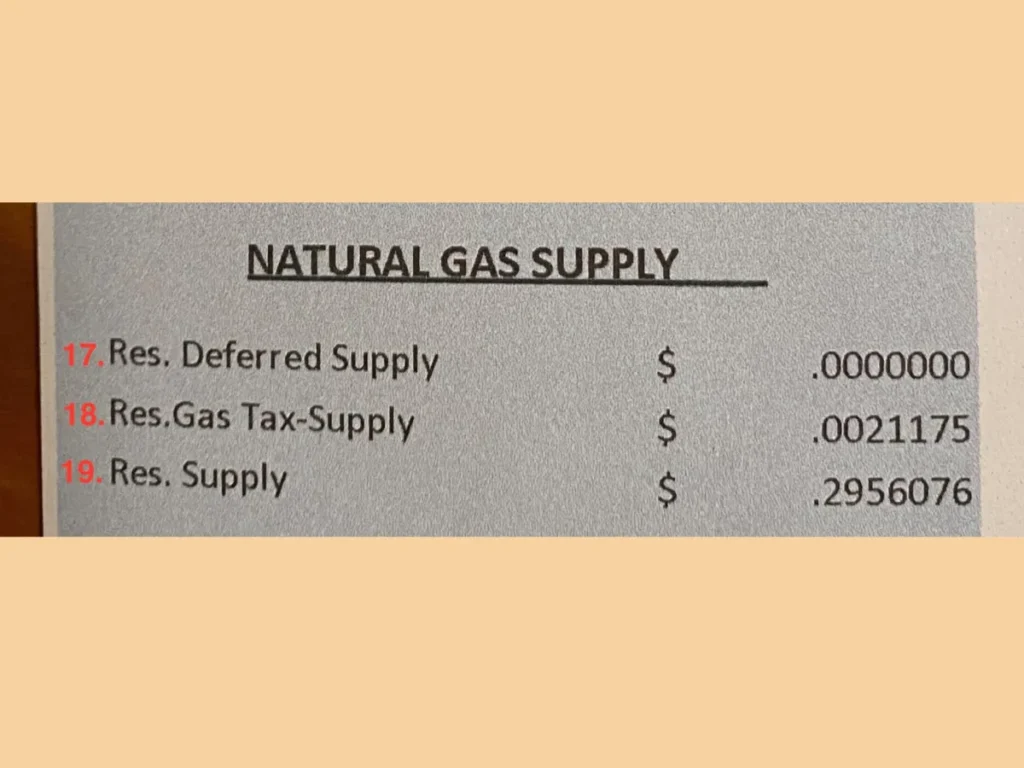A guide to the formulas behind your monthly power bill.
By Amanda Eggert MONTANA FREE PRESS
Have you ever looked at your power bill and struggled to understand the various rates and charges that dictate how much you owe your utility company? If yes, you’re not alone — even energy professionals can find their bills befuddling.
To bridge that knowledge gap, we dug into the nearly 20 rates and charges that are factored into monthly residential bills for the state’s largest utility company, NorthWestern Energy.
NorthWestern supplies electricity or natural gas to approximately two-thirds of Montana’s population. The company is regulated by the Montana Public Service Commission, a five-member elected body charged with balancing the financial health of monopoly utilities like NorthWestern with the interests of Montana power consumers who can’t get power from other electricity or natural gas suppliers.
Among other duties, the PSC periodically examines NorthWestern’s plan for meeting projected power demand. It also steps in to adjudicate disputes between utilities and independent power suppliers, who sometimes disagree over how much the company should pay for electricity generated elsewhere.
The big-ticket items for customers, though, are “rate case” decisions. During these multi-month reviews, NorthWestern asks the commission to approve changes to the formulas used to calculate how much money it charges customers for electricity and natural gas. Multiple rates, each reflecting a different portion of the cost involved in getting power to a customer, are involved.
Last October, for example, the PSC approved a new rate structure for NorthWestern that resulted in a 24% electricity bill increase for residential customers. NorthWestern started incorporating those revised rates into its monthly bills last November.

The most expensive part of providing power is buying or generating it. But there are a bunch of other costs factored into your power bill, too: everything from the property taxes NorthWestern pays on its facilities to the cost of maintaining the transmission lines used to move electricity across the state.
Let’s dive into the rate schedule that’s in effect as of January 2024, which you can find on the back of your latest power bill. It’s divided into electric and gas sections, and subdivided in supply (the cost of bringing power into NorthWestern’s possession) and delivery (the cost of getting that power to customers). Let’s take a look at electric delivery first:
ELECTRIC DELIVERY

- The Service Charge is a flat-rate fee included on all customer bills. That amount as of January 2024 is $4.20 per month for residential electricity. Through rate case decisions, the PSC approves changes to the service charge, which helps NorthWestern cover costs associated with electricity meters and various personnel-related expenses such as bill processing, customer assistance and meter reading.
Unlike other figures on the electric fee schedule, the service charge doesn’t scale with how much power you use. - The Residential Electric Delivery Tax charge covers the property taxes NorthWestern pays for delivery infrastructure, including the poles and wires that carry electricity from larger transmission systems to your home.
Like other non-service charges, this charge scales with how much power you use, with the listed rate multiplied by the number of kilowatt-hours of electricity or therms of natural gas you’ve consumed during the billing period. For example, a customer who used the typical 750 kWh in the billing period will pay 0.0117650 x 750 = $8.82 for the residential electric delivery tax component of their bill.
The property taxes NorthWestern Energy pays on the considerable infrastructure it owns are treated as a “flow-through” expense, meaning they are passed directly on to customers through this and other bill components. Tax-based rates for NorthWestern’s electricity customers were reduced on Jan. 1, 2024, as a result of a 20% decline in NorthWestern Energy’s property tax bill between 2022 and 2023. PSC staff review these changes, but intervene only if they find a miscalculation. - The Residential Distribution Delivery charge helps NorthWestern cover the cost of building and maintaining the lower-capacity power lines that bring power to your residence from local electric substations. The amount is set through PSC-overseen rate cases and accounts for about one-third of your overall electric bill.
- The Residential BPA Exchange Credit is the result of a 40-year-old federal law related to Bonneville Power Authority hydroelectric dams located throughout the Columbia River basin. Unlike other rates on the schedule, this one is negative (as indicated by the parenthesis around it), meaning it results in a deduction against other parts of the power bill.
While many Pacific Northwest utilities benefit from cheap, subsidized power generated by the federally owned BPA dams, NorthWestern is among the regional utilities that doesn’t draw power directly from those dams. The exchange credit is designed to even out the resulting disparity. Small farm and residential customers served by shareholder-owned utilities in the Pacific Northwest are entitled to the credit, which is subject to change on an annual basis. It gives most customers a dollar or two back on their monthly bills. - The Residential CTC-QF, or Competitive Transition Charge for Qualifying Facilities, is a remnant of the early 2000s transition that took place when NorthWestern Energy assumed contracts held by its predecessor, the Montana Power Company. The charge helps cover costs associated with legacy contracts for facilities such as the Colstrip Energy Limited Partnership, which burns some of the waste rock from the Rosebud coal mine to produce power.
- The Residential Transmission Delivery charge pays for the construction and maintenance of high-voltage transmission lines and substations, which transfer power from generating plants into a customer’s local area. The charge is set in a rate case proceeding.
- USBC is shorthand for Universal System Benefits Charge. The charge feeds a fund that helps low-income customers pay their bills and weatherize their homes to reduce heating costs. It also helps fund electricity conservation initiatives designed to reduce the amount of electricity the utility has to put on the grid. The Residential USBC charge is set by state law.
ELECTRIC SUPPLY

- The Residential Deferred Supply charge is an accounting mechanism that adjusts for differences between the utility’s actual electric supply costs and what it has collected with its supply charge, which is based on cost projections.
On a quarterly basis, NorthWestern “trues-up” its balance sheet for any electricity over-collections or under-collections — commonly the latter. If NorthWestern has collected too little relative to its forecasts, it will spread out the under-collection amount over a period of 12 months so customers aren’t forced to pay for the extra all in one go. The PSC reviews this process annually. - The Residential Supply charge covers the cost of generating or buying the electricity NorthWestern supplies to its customers. Built into this cost are debt payments and operating costs associated with the Colstrip coal-fired power plant, hydroelectric dams along the Missouri River and long-term power purchase agreements the company has made with other facilities, including the MTSUN solar array near Billings. The Residential Supply charge also covers money the company spends buying power on short-term energy markets, purchases that can become particularly important during periods of high demand. The charge is set in a rate case.
- The Residential Electric Supply Tax charge covers the property taxes NorthWestern pays on power plants the utility owns. This is a flow-through cost that, like other tax-related portions of your bill, was updated Jan. 1.
NATURAL GAS DELIVERY

- The flat-rate Service Charge for natural gas is $6.50 per month. As with the electric delivery service charge, this is set by the PSC based on proposals from the company and doesn’t vary with usage.
- The Residential Transmission Delivery charge covers another infrastructure cost, this one for the construction and maintenance of the larger-volume pipelines that move gas around the region. It accounts for about one-fifth of your natural gas bill.
- The Residential Gas Delivery Tax charge refers to the property taxes NorthWestern pays for its pipelines. As with other tax-related rates, this is a flow-through expense.
- The Residential Distribution Delivery charge covers NorthWestern’s expenses related to the smaller pipelines that bring gas directly to your home. It accounts for about one-fifth of your natural gas bill and is set in a rate case.
- There is a USBC, or Universal System Benefits Charge, on the natural gas side as well. This helps cover programs that help low-income customers lower their gas bills.
- The Residential Storage-Delivery charge on the gas portion of the bill goes toward the infrastructure NorthWestern uses to store the natural gas it purchases when market prices are low. When natural gas prices rise, as they typically do in the winter, the company can pump the stockpiled gas out of storage.
NATURAL GAS SUPPLY

- The Residential Deferred Supply charge on the natural gas side is similar to the deferred supply charge on the electricity side, allowing NorthWestern to square its accounting if its forecasts differed from actual natural gas usage and prices. This can be a credit or a debit, depending on the month.
- The Residential Gas Supply Tax charge refers to taxes NorthWestern pays on its storage infrastructure and passes on to customers.
- The Residential Supply charge accounts for the cost of acquiring the gas the utility purchases or pulls from its gas fields. Since the natural gas marketplace tends to be relatively volatile, this charge can change considerably from one month to the next. As of January 2024, this charge makes up about one-third of residential customers’ gas bills.
Assuming NorthWestern supplies your home with both electricity and natural gas, your total monthly bill is calculated by summing these charges together. (One caveat: The rates sometimes change in the middle of the billing period your monthly statement covers.)
It can be helpful to remember that everything on your bill except the service charges is consumption-based. If you’re looking to bring down your bill, finding ways to cut the kilowatt-hours of electricity or therms of natural gas you use is a good start.
If some of your power bill-related questions are unanswered here, there are other resources available. NorthWestern has created a PDF that breaks out other, less wonky aspects of your bill — for instance, where to find your monthly meter reading, how to track your power usage over time, and what number you can call if you’d like to put a power-related query to the PSC.
The company also produces a spreadsheet that lets residential users estimate their power bill under the current rate structure by plugging in how many kWh of electricity or therms of natural gas they expect to use for the month. For that resource, navigate to NorthWestern’s Electric Rates & Tariffs page and download the Current Electric & Gas Rate Summary .xlsx file at the top of the page.
If you’re served by Montana-Dakota Utilities, the other major shareholder-owned utility providing power to Montana residents, you should be able to apply similar logic to MDU’s residential rate schedule.













